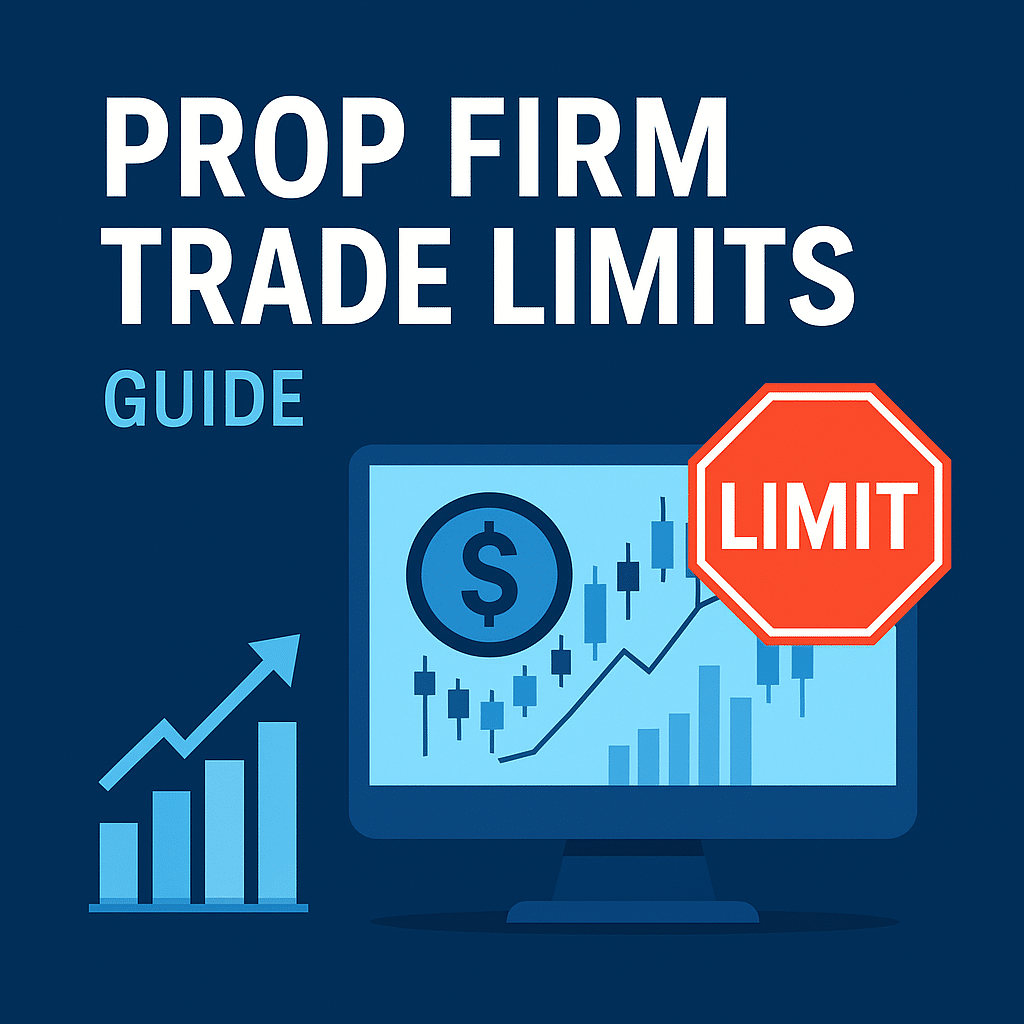Understanding Trade Size Limits in Prop Accounts: What You Need to Know
In the world of funded trading, prop firm trade limits are one of the most important rules every trader must understand clearly. These limits are not just technical restrictions—they are risk control mechanisms designed to protect capital and maintain account longevity. Before executing your strategy, it’s essential to know how these limits influence your trades and how you can respect them without compromising profitability.
In this article, we’ll explore the role of trade size limits in prop trading accounts, the reasons behind them, and how to work within those boundaries effectively—especially in a flexible and professional environment like Larsa Capital.
Why Do Prop Firms Impose Trade Size Limits?
Trade size limits are not intended to hinder traders. Instead, they serve to protect funded capital and ensure consistent risk management. Firms like Larsa Capital provide traders with access to substantial capital, and that responsibility requires sensible position sizing.
Here are the key reasons behind these limits:
-
To reduce excessive risk: Without limits, a trader might open overly large positions in pursuit of fast profits, often leading to large losses.
-
To maintain account sustainability: Proper risk control ensures that the account can remain active for the long term.
-
To shape trader behavior: Position size is one of the most revealing aspects of a trader’s discipline and approach.
-
To ensure fairness across traders: Everyone trades within the same rules and capital exposure constraints.
How Do Trade Size Limits Affect Your Strategy?
Whether you scalp, day trade, or swing trade, these limits will influence your decision-making. For example:
-
Scalpers may need to reduce their position size to stay within limits.
-
Traders relying on volatile market moves must adjust their stop-losses and position size accordingly.
-
News traders need to be especially cautious, as fast movements during news events can be risky with large trade sizes.
Understanding and adjusting to the limits is key to long-term performance and account survival.
Common Types of Prop Firm Trade Limits
Trade size limits can take different forms. Understanding each type helps traders operate within the rules and reduce the chance of violations.
1. Maximum Lot Size Per Trade
This is the largest allowable trade size per order. For instance, a 5-lot cap on a currency pair means no single trade can exceed that amount.
2. Maximum Total Exposure
Even if you use small lots, there may be a total cap on how many positions you can hold at once.
3. Asset-Specific Limits
Some assets may have stricter limits than others. For example, gold or indices might have different lot caps compared to forex pairs.
4. Time-Based Restrictions
Certain hours—especially during high volatility or low liquidity—may come with stricter rules or restrictions.
How to Work Smartly Within Prop Firm Trade Limits
Rather than seeing these limits as a barrier, use them to your advantage. Here’s how:
-
✅ Use a position size calculator to ensure your trades fit within the allowed lot sizes.
-
✅ Split trades instead of opening one large position. This helps you stay flexible.
-
✅ Create a clear trade plan that includes predefined lot sizes for each scenario.
-
✅ Monitor your dashboard on Larsa Capital’s platform—it shows all your active limits in real-time.
-
✅ Diversify your instruments, as different assets offer different flexibility in sizing.
Fair and Transparent Limits at Larsa Capital
Larsa Capital sets a strong example when it comes to applying trade size limits fairly. Their system is built to support traders—not restrict them. Limits are clearly defined, updated transparently, and visible directly in your account dashboard. This ensures that you always know where you stand.
The goal is to build consistent, disciplined traders who respect risk while scaling their performance.
Common Mistakes to Avoid
Even with clear rules, many traders still make mistakes that can cost them their funded accounts. Be aware of these common pitfalls:
-
❌ Opening trades without calculating size or risk.
-
❌ Ignoring changes in trade size limits when switching assets.
-
❌ Using the same size for all markets without adjusting for volatility.
-
❌ Trying to recover losses quickly by opening oversized trades.
Avoiding these mistakes is essential to passing and maintaining your funded status.
Final Thoughts
Trade size limits in prop accounts are not just minor technicalities—they’re essential parts of the professional trading framework. Smart traders view them as tools for structure, safety, and long-term success.
At Larsa Capital, the goal is to empower traders with a supportive, transparent environment where discipline and strategy win. Respect the limits, manage your risk wisely, and you’ll set yourself up for sustainable growth.

